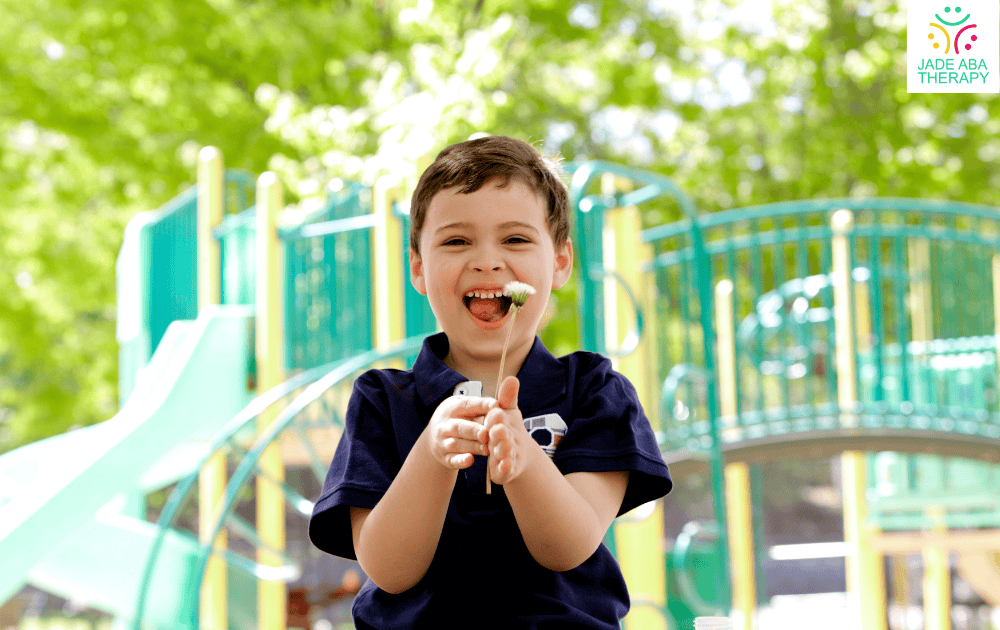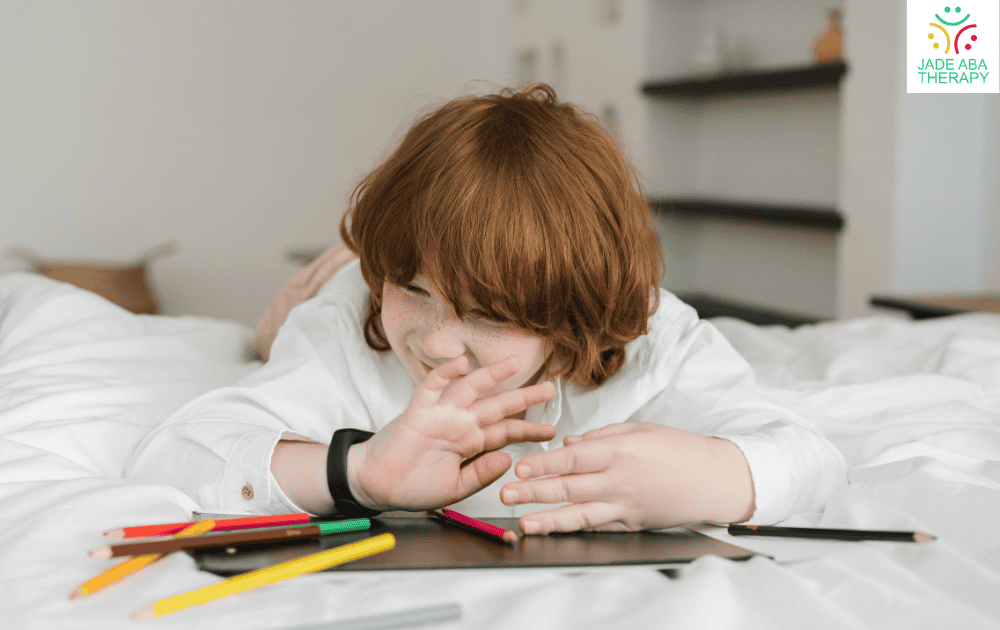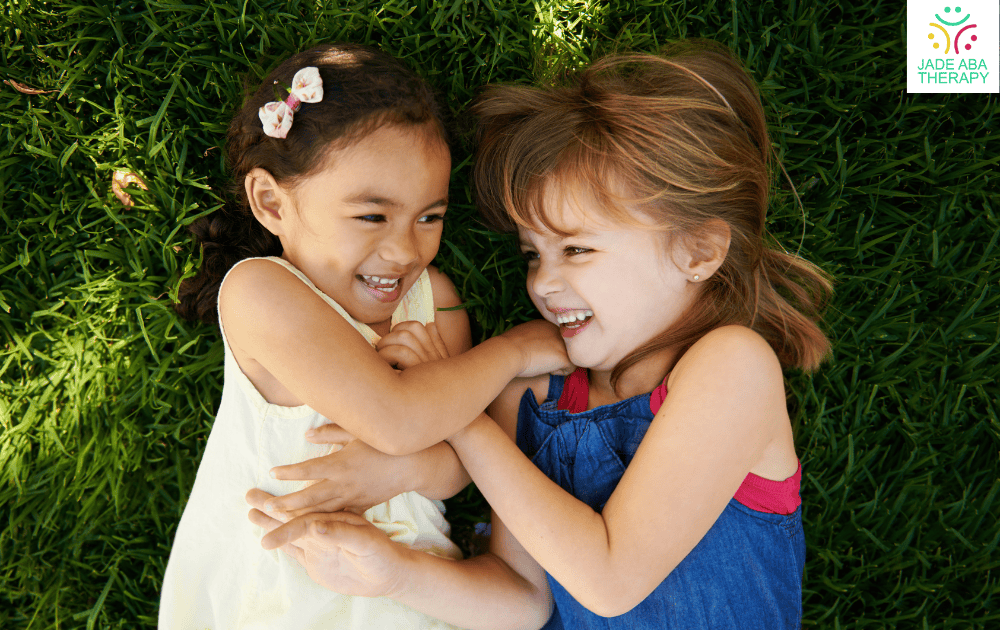Laughter is a universal expression of joy and amusement that plays a significant role in human social interactions. With autistic individuals, their laughter often exhibits unique characteristics that are important to understand. In this article, we will explore the characteristics of autism laughter as well as its social impact.

Characteristics of Autism Laughter
Children with autism tend to produce laughter that has a distinct quality. Their laughter is often voiced, meaning it has a song-like or melodic quality, in contrast to unvoiced laughter which is usually atonal. This voiced laughter in autism may be accompanied by variations in pitch and intonation, making it different from the laughter typically observed in neurotypical individuals.

Social Impact of Autism Laughter
The impact of autism laughter extends beyond its acoustic properties. Subjects in studies have found the unguarded, voiced laughter of children with autism to be much more enjoyable than that of typically developing children. This preference for genuine laughter may reflect a dislike for disingenuous expressions and a genuine appreciation for the authenticity displayed through voiced laughter.
Voiced laughter in autism has the potential to play a significant role in building social connections. It can serve as a means of communication and expression, helping individuals with autism connect with others on an emotional level. By embracing and understanding the unique laughter characteristics of individuals with autism, we can foster an inclusive environment that values and appreciates their unique forms of communication and expression.
Understanding the characteristics and social impact of autism laughter is crucial for parents, caregivers, and educators working with individuals on the autism spectrum. By recognizing and embracing these unique forms of laughter, we can create an environment that promotes social inclusivity and supports the emotional well-being of individuals with autism.
Research Findings on Voiced Laughter
Research conducted on children with autism aged 8 to 10 has shed light on the prevalence of voiced laughter in this population. The study revealed that children with autism laughed in a sing-song, voiced fashion 98% of the time, while only 60% of laughs in typically developing children were voiced. This stark contrast highlights the significance of voiced laughter as a characteristic feature of laughter in autism.
Furthermore, subjects participating in studies have expressed a preference for the genuine, unguarded voiced laughter of children with autism over that of typically developing children. William Hudenko, Ph.D., a researcher in the field, suggests that children with autism may not learn social laughter in the same way as typically developing children.
When individuals with autism laugh, it is often a genuine expression of happiness, which may be why people find their laughter enjoyable. This authenticity in their laughter has the potential to create stronger social connections as it reflects their genuine emotions and intentions.

Challenges with Humor in Autism
Autistic individuals often have a unique sense of humor that may be perceived as random or inappropriate when compared to their neurotypical peers. They may express humor in different ways or find amusement in things that others may not understand. This distinct sense of humor is a result of their unique perspective of the world and their individual experiences.
While laughter is often seen as a universal language that brings people together, individuals with autism may face challenges regarding humor. Acknowledging the sense of humor in autistic individuals and the difficulties they may encounter in comprehending humor are essential aspects to consider if you want to understand and connect with them more deeply.
Difficulties in Understanding Humor
Sarcastic humor, in particular, tends to be one of the most misunderstood types of humor for individuals with autism. The combination of difficulties in understanding social cues and rigid thinking patterns can result in confusion when interpreting jokes that rely on irony and mismatching body language.
That’s why it’s important to note that the seemingly random laughter exhibited by autistic individuals can occur due to various reasons. It may stem from finding something amusing in their own thoughts, nervousness in handling emotions, or difficulties in coping with the present moment. The exact cause of this random laughter is not entirely understood, and anecdotal and personal explanations currently form the basis for understanding it.
Despite the challenges, it is worth highlighting that autistic laughter can draw the attention of others. Many people are naturally attracted to the unique laughter of autistic individuals. However, differing opinions exist within the autism community, with some advocating for allowing autistic laughter to remain spontaneous and genuine rather than attempting to teach the intent behind laughter.
By understanding the sense of humor in autistic individuals and recognizing the difficulties they may face in understanding humor, we can foster a more supportive and inclusive environment for them. Encouraging acceptance, patience, and open communication can help bridge the gap between different perspectives of humor and promote meaningful connections between individuals with autism and their peers.
Types of Laughter in Autism
In this section, we will explore two types of laughter commonly observed in autism: solitary laughter and unshared laughter.
Solitary Laughter
Children with autism are more likely to exhibit solitary laughter. Solitary laughter refers to laughing alone in response to stimuli that typically do not evoke laughter in others. Autistic individuals may find amusement in their own, often in ways that may seem unusual to neurotypical individuals.
One key aspect of solitary laughter is that individuals with autism rarely laugh in response to others’ laughter unless they are trying to echo the sound. Their laughter tends to be self-generated and unrelated to the social cues that typically elicit laughter in social interactions. This unique characteristic of laughter in autism reflects the individual’s internal experiences and processing of humor.
Unshared Laughter
Another type of laughter commonly observed in autism is unshared laughter. Autistic individuals tend to produce unshared laughter, laughing when no one else around them is doing so. This spontaneous nature of their giggling adds to its charm; however, it can also lead to awkward situations and misunderstandings when laughter occurs at inappropriate times.
The occurrence of unshared laughter in autism can be attributed to various factors. Autistic people may find something funny in their own heads or experience nervousness in handling emotions, leading to laughter as a coping mechanism. Sometimes, the cause of unshared laughter remains unknown, as it can be a result of internal thoughts or experiences that are not readily apparent to others.

Attraction to Autistic Laughter
Autistic individuals often have a sense of humor that is considered random or inappropriate compared to their neurotypical peers. This distinct sense of humor can lead to expressions of humor in different ways or misunderstanding other people’s attempts at humor.
Despite these differences, many people are still attracted to the laughter of autistic individuals. This attraction may stem from the genuine and unfiltered nature of their laughter. Autistic laughter is often seen as a reflection of their true emotions and thoughts, which can be refreshing and endearing to others.
Overall, the perception of Autism laughter is often positive, with many individuals responding favorably and being attracted to the authentic and unguarded laughter of autistic individuals. By embracing and understanding the unique characteristics of autism laughter, we can promote inclusivity, acceptance, and appreciation for the diverse experiences of individuals with autism.
Embracing Autism Laughter
In conclusion, while autism laughter may have unique characteristics, parents and caregivers need to embrace and understand the significance of laughter in individuals with autism. Allowing genuine laughter and recognizing its potential for building social bonds can have a positive impact on the lives of those on the autism spectrum.